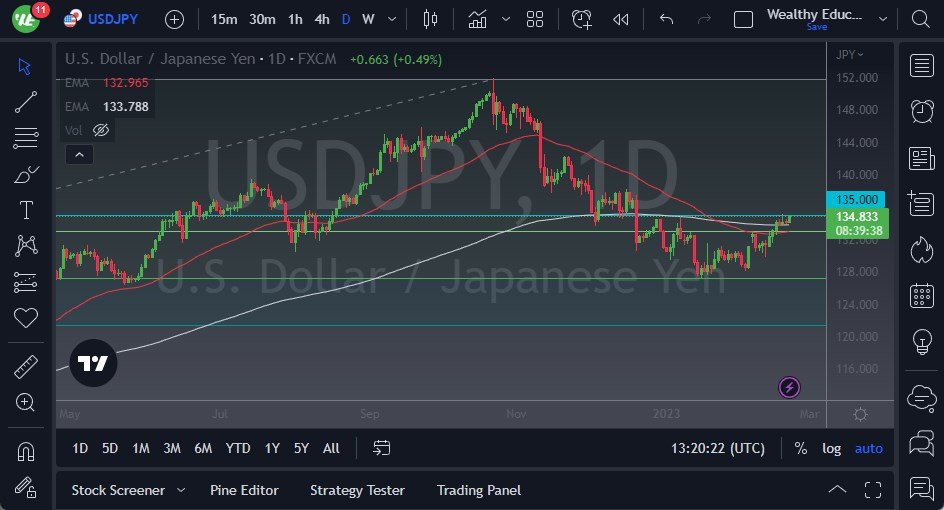- During Tuesday's trading session, the US dollar rallied and approached the ¥135 level, which has been both a support and resistance level in recent times.
- As a result, the USD/JPY currency pair is paying attention to the Bank of Japan's yield curve control, which may require the central bank to buy an unlimited amount of 10-year Japanese Government Bonds to keep yields below 50 basis points.
- This could result in flooding the market with Japanese yen and driving down its value.
Upward Pressure Coming in Play
The 200-Day EMA and 50-Day EMA indicators are both located below the market, and there is a strong possibility that the Moving averages will cross over again. If the market can stay above these two moving averages, it is highly likely that we will continue to see upward pressure. If the market can break above the ¥135 level, it could potentially move towards the ¥137.50 level, which has previously seen significant selling pressure. A move above this level could trigger a much larger upward trend.
However, changing trends are typically messy, especially when it comes to the Japanese yen. Despite this, the market seems to have a "buy on the dips" mentality, which suggests that buyers are ready to enter the market and support it on any pullbacks.
Traders should keep a close eye on the Bank of Japan's actions and any significant news events that could impact the market. Additionally, they should pay attention to the 200-Day EMA and 50-Day EMA indicators, as well as resistance levels at ¥135 and ¥137.50.
Overall, the US dollar is showing signs of a potential upward trend. However, it is still a messy affair and subject to volatility, especially given the involvement of the Japanese yen. Traders should be prepared for pullbacks and any potential resistance levels, as well as any news events that could impact the market's performance. Of particular note will be the FOMC Meeting Minutes this week, as it could give us an idea as to know how tight the Federal Reserve plans on being in the future. On the other hand, pay close attention to the 10 year yields in Japan, because the closer they get to the 50 basis points level, the more pressure you will see on the Japanese yen, and of course vice versa. As yields dropped, that has typically been very helpful for the Japanese yen as it relieves quite a bit of pressure.
Ready to trade our daily Forex forecast? Here’s a list of some of the best forex broker ranking to check out.


